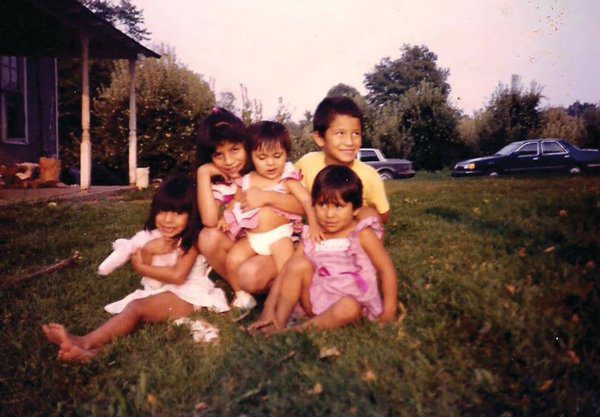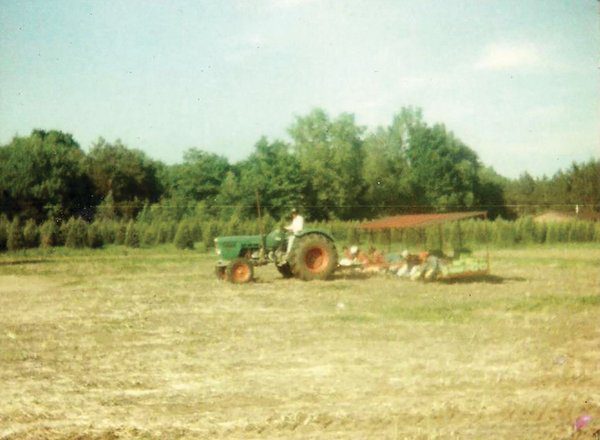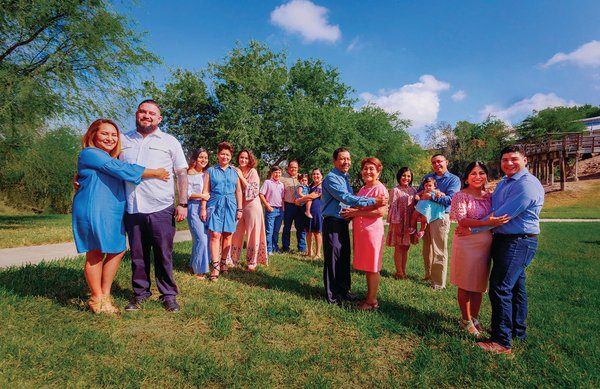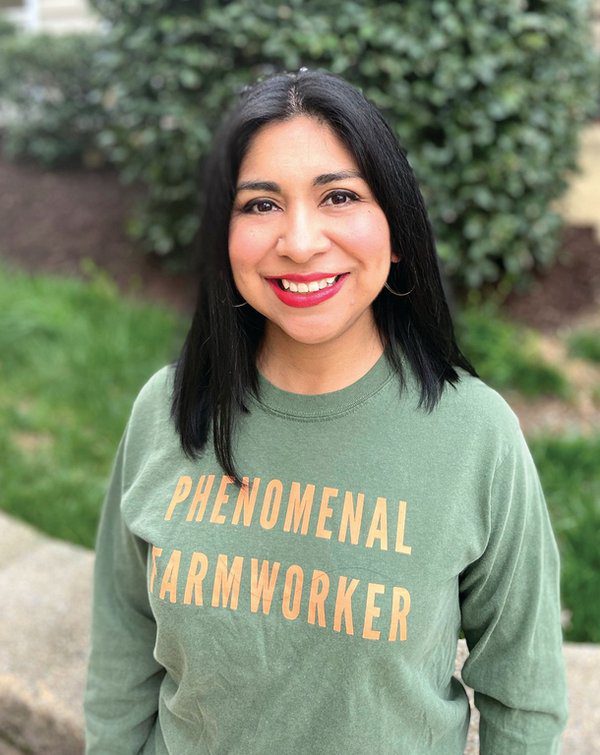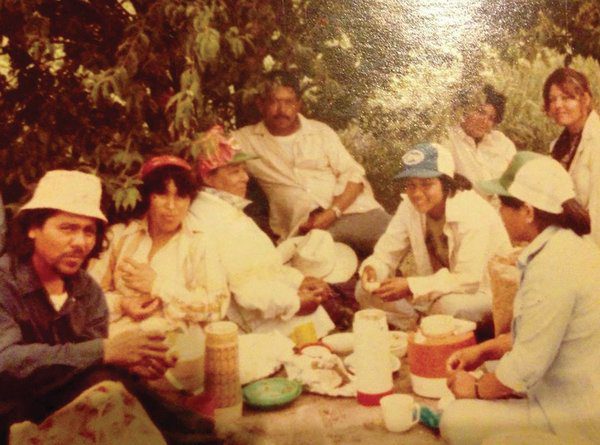
‘A Loss of Childhood’
Across the nation, kids as young as twelve are doing difficult, often dangerous jobs.
When you think of tobacco, you probably envision vast fields of plants somewhere in the South. You probably don’t picture those fields being in New England states like Connecticut or Massachusetts, but that’s exactly where a lot of shade tobacco is grown, for use all over the world. Starting in the 1600s, tobacco became a big business in these two Northern states; the area between Springfield, Massachusetts, and Hartford, Connecticut, even became known as Tobacco Valley. Connecticut in particular began the process by getting tobacco seeds from Virginia.
While farming was historically a family-run industry in which the children of farmers worked, many enslaved people were originally the primary caretakers of these tobacco crops. Connecticut freed its remaining enslaved people in the 1840s, two decades before the Thirteenth Amendment. It soon became quite common—and legal—to use children to tend tobacco crops. During World War I, New England and other parts of the United States employed young children in mills, fields, and factories. The Bureau of Labor Statistics reports that by 1900, one out of every five U.S. children worked.
In 1911, the president of the Connecticut Tobacco Company proposed that Black laborers be used to cultivate tobacco crops, and the idea took hold in 1916. Thus began the recruitment of Black students from Southern states to work in the fields seasonally. College students were recruited from North Carolina, Florida, Georgia, and Virginia. They were paid $2 a day and worked from June to September.
In 1941, tobacco farms began recruiting Black high school students. They were provided room and board, which they paid for out of their weekly earnings. Among the students recruited was Dr. Martin Luther King Jr., then a teenager, who worked the fields in 1944 and 1947. My father, John, was also recruited along with many other students from Virginia in the 1960s.
The use of child labor is still common on many U.S. farms, though child labor laws vary from state to state. As Human Rights Watch points out, the United States “does not provide the same protections to children working in agriculture as it does to children working in all other sectors.” The minimum age to work in agriculture in Connecticut and Massachusetts today is fourteen. Massachusetts requires fourteen-year-olds to complete a vocational agriculture training program prior to beginning work.
Norma Flores López is the chief programs officer at Justice for Migrant Women, a nonprofit advocacy group based in Fremont, Ohio. A former child farmworker from the Rio Grande Valley in Texas, López estimates that she first started entering the fields with her parents when she was nine years old. She began working full time as a migrant farmer in 1997, when she was twelve.
López’s family has worked in migrant farming for generations. Her grandparents had farmed plots of land in Mexico. Her mother and father were born in the United States, but as children went back and forth between Mexico and the United States with their parents to work on farms.
Eventually, López’s parents ended up moving to the United States permanently because border security at the U.S./Mexico border began tightening up. As López grew up, her family would move a few times a year.
“We would drive up to states like Michigan, Iowa, Colorado, and Indiana,” she recalls in an interview. “We would follow the harvest. Everything from corn to picking apples, harvesting onions, asparagus. So a number of different crops.”
I ask López if she ever felt like she was in danger when working in the fields.
“Like with any kid, you’re not fully aware of the danger,” she replies. “You just know that there are particular situations that stand out. We were expected to keep up with the adults, and we would push our bodies as much as possible. And then there were things like pesticides and other chemicals. We weren’t aware of those. Growing up, they were explained to us as medicine for plants. You never really think of medicine being harmful. You’re not thinking that it’s laced with dangerous chemicals that can cause long-term injuries.”
Now, as an adult, López ties these exposures to incidences of cancer and Alzheimer’s and other chronic illnesses. Her mother, father, and some other relatives who worked in the fields are cancer survivors.
López recalls walking with family members through some fields one day when an airplane spraying pesticides headed toward them. Her father, typically a stoic man, started yelling that they should drop everything and run. After they made it safely out of the field, López’s father called their crew leader to let him know what happened. The crew leader shrugged the incident off and said, “Whoops. We made a mistake. We sent you to the wrong field.”
No one bothered to ask López and her family members if they were OK. They were just taken back to join the rest of the farmworkers so they could work for the rest of the day.
López and other child laborers were also exposed to dangerous tools. She remembers people getting cut or run over by heavy machinery or trucks.
According to a 2020 fact sheet from the National Children’s Center, roughly half of the 893,000 youth who lived on farms in 2014 also worked on them. That year, more than 265,600 nonresident youth were hired for agriculture jobs. Agriculture-related incidents kill a child an average of once every three days. Nearly 50 percent of all fatal injuries involving young workers occur in agriculture.
“What’s sad about the work in agriculture is just how dangerous it is,” says Margaret Wurth, a senior researcher at Human Rights Watch. “There are really high rates of injury and death. Kids are lifting really heavy loads and lugging baskets, doing repetitive motions over and over. A child whose body is still developing, hunched in the same position doing these repetitive motions all day, these repetitive motions can really take a toll on a child’s body. And there’s extreme heat, which, with climate change, is becoming a more severe risk. These are layers upon layers of risk that kids are exposed to in agricultural work specifically.”
Human Rights Watch is made up of lawyers, journalists, and other experts from around the globe who investigate and report on various types of abuse, including child labor. The group primarily focuses on child labor practices internationally, but also has a stateside branch working to expose unfair U.S. child labor practices in agriculture by telling the stories of the children involved.
Wurth notes that children’s education can also be negatively affected by the hours they spend at work. She says the combination of schooling and work can be taxing, especially if the children are working late into the night after school. And while some children go to camps or on vacation during summer break, child workers usually spend that time working long hours.
“And of course, there are kids from migrant families that move from state to state,” Wurth continues. “Continuity of schooling can be especially hard for those kids. Those impacts can be severe and just kind of [cause] a loss of childhood. The idea of having the right to play really can’t be overestimated.”
As a child, López remembers being asked by other students about fall, spring, or summer breaks from school. They would talk about the activities they enjoyed away from school. The only thing López got to do more of during these breaks was work.
López did farm work all through high school. Once she went to college, she took a paid internship and sent the money home to help support her family. “That way, I didn’t have to go work in the field,” she says.
López’s father had loved school, but was forced to drop out at an early age. That didn’t stop him from educating himself, however; López’s voice fills with pride as she recounts her father’s knowledge of history and his ability to calculate math off the top of his head. Her mother also dropped out of school at a young age. When López asked her mother what she wanted to be when she grew up, she responded by saying, “I never had a chance to dream.”
Because the family moved often, López was sometimes unable to start school until October, a month or so later than other students. And, due to different state systems, many of her grades could not be transferred from one school to another.
“I had to make up a few months’ worth of grades while keeping up with my regular schoolwork,” she says. “So I had to work double time.”
López’s parents were vigilant about enrolling all of their children in school. The family eventually pieced together enough money to buy her a computer, but, before that, López spent many hours in the local library typing up her homework. Her father would sit outside and wait for her to finish.
“It was those sort of sacrifices that our parents made that allowed us to see the value and importance of school,” she says.
López went on to get an undergraduate degree in communications and a master’s in public policy. Her education has enabled her to have a career advocating for farmworker families. Her accomplishments include serving as the governance and development/collaboration manager at East Coast Migrant Head Start Project, being the chair of the Child Labor Coalition’s domestic issues committee, and many more.
As the chief programs officer at Justice for Migrant Women, López advocates for the rights of migrant farmworkers’ children. She educates the public about issues affecting those children and the migrant farmworker community as a whole. In 2021, Justice for Migrant Women sent the Biden-Harris Administration a list of suggested policy priorities, including the “protection of children in agriculture from workplace hazards.”
In January 2022, the U.S. Department of Labor found that a Walgreens in Charleston, South Carolina, had violated child labor laws by employing a twelve-year-old. (According to the Fair Labor Standards Act, the minimum age for employment in non agricultural sectors is fourteen.) The hours that the child worked for Walgreens also violated work-hour standards set for employees under sixteen years of age.
Reid Maki, the director of child labor issues and coordinator of the Child Labor Coalition, says the violations flagged in the Walgreens case were unusual.
“We really don’t have a lot of child labor in other sectors because it’s illegal,” he says. “There’s not a lot of child labor enforcement in the United States, but there’s enough that employers know to be careful.” The Walgreens story “is notable because we just don’t see many stories like that.”
Since President Joe Biden took office last year, Maki has seen a significant uptick in the enforcement of child labor laws. “We’re seeing a handful every month or close to it,” he says. “We’re seeing a lot of Department of Labor action that wasn’t happening with the Trump Administration.”
In January of this year, Republicans in the Wisconsin state legislature passed Senate Bill 332 on a party-line vote. The bill would have extended the legal number of working hours for children under sixteen years of age, allowing children to work between the hours of 6 a.m. and 9:30 p.m. on days preceding school days and as late as 11 p.m. if the next day isn’t a school day. It was vetoed by Democratic Governor Tony Evers, who is up for re-election this year.
In a letter opposing the Wisconsin bill, the Child Labor Coalition noted that it has, during the past twenty-five years, “watched the average annual death toll for teen workers drop from over seventy per year to less than half that amount. Let’s not reverse course and weaken child labor protections.”
“When you extend the hours which kids can work, you are putting them more at risk,” Maki says. “One of the ways that teenagers die is a lot of car crashes because they’re on the roads more. And they’re on the roads late at night. There are more drunk drivers on the roads at 11 p.m. than there are at 9 p.m. or 7 p.m.”
Moreover, he says, “You create this kind of domino effect of fatigue. By the time school rolls around on Monday morning, you’re exhausted. There has been some research that suggests that if a teenager works more than twenty hours a week, their grades start to go south. Their ability to graduate high school diminishes.”
It’s difficult to find information on illegal child labor in sectors other than agriculture. But Maki says there are instances where children use illegal IDs to secure employment, often at meatpacking plants where the employers do not look at the IDs carefully.
“There was an immigration raid in a place called Postville, Iowa,” Maki relates. “It was a kosher meat processing plant. The Bush Administration raided it and they found fifty teenagers working there. There should have been none. These kids were under eighteen. The fact that they found fifty suggested to us that there’s a decent likelihood that there were kids working in other processing plants.”
Maki says what happened in Iowa underscores the risks of asking the government to check meatpacking plants for child laborers.
“We made some suggestions about that, but we didn’t want a lot of immigrants being deported,” he says. “So we were torn. You know, we wanted to protect the children. Those raids are heart-wrenching. Parents just disappeared; immigration authorities deported them. They took them away on the spot and incarcerated them. The kids were kind of fending for themselves.”
Sometimes, the work that children perform can turn deadly. Maki recounts an incident in Salem, Connecticut, in which a six-year-old was killed doing illegal wood work in 2012. The boy was throwing brush into a wood chipper when he was suddenly pulled in. Maki also tells of a little boy he heard about while doing field research for the Child Labor Coalition who lost his arm doing work in a shed on a farm, after it got caught in some machinery.
“There are a number of protections that have been instituted to help kids stay safe,” he says. “But it’s been pretty hard to write about a bunch of these kinds of isolated cases that add up to kids dying. There aren’t many, except for agriculture.”
Both Maki and Wurth say there is a shortage of labor inspectors in the United States, making it hard to inspect every farm or facility that may employ children.
In October 2021, Lawyers for Good Government released a state-by-state report about child farmworkers. Its findings include:
- The United States has always exploited the labor of communities of color and their children for farmwork.
- The federal minimum age for a child to work full time in the agricultural industry is twelve years old.
- 330,000 children under age sixteen are farmworkers in the United States.
- Approximately thirty-three children are injured on farms every day.
- People of color make up more than 90 percent of farmworkers in the United States.
- Twenty-two states lack a minimum age to work in agriculture.
- The penalty for employers with an initial violation of child labor laws in Indiana is a warning letter; it is the lightest penalty of any state.
As Lawyers for Good Government points out, there have been protests against the holding of migrant children in detention centers. And we’re well aware of the exploitative labor of children in foreign countries to make our clothing or mine for rare minerals for our electronics. But when it comes to looking at the children harvesting, cultivating, and working their fingers to the bone to provide us food, we look away.

